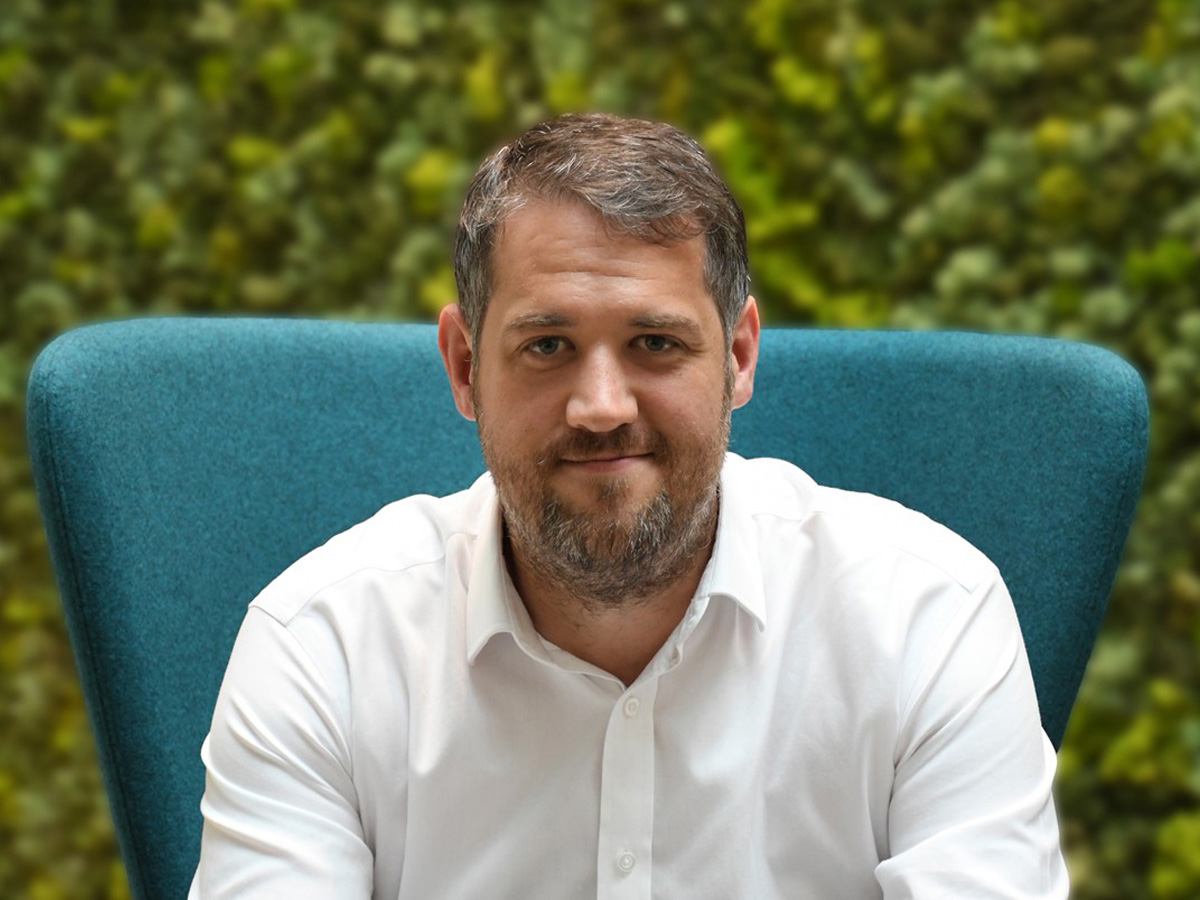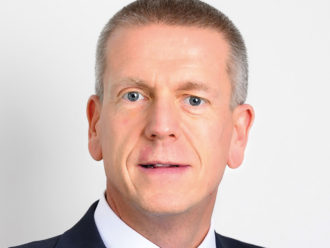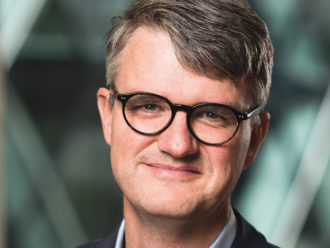Lothian Pension Fund’s chief executive talks about the benefits of collaboration and life after the pandemic.
How has lockdown been for you?
I am reasonably upbeat about it. We are in interesting times but for a man that cuts his own hair I am in fine spirits.
I am incredibly proud of the work that my team has done over the past four months
to keep us all on the road to do what we are here to do, which is to pay pensions to members.
Has working from home been a difficult transition for your team?
In terms of the technological set-up, we probably just had a foothold. We had laptops and a business continuity arrangement, but I saw a remarkable ability to adapt. Thanks to our technology partners we were fully equipped and everybody was working within 24 hours.
You are an accountant by trade, so how does that affect your perspective on Lothian’s investment strategy?
I sometimes describe myself as “a former accountant” or “reformed accountant”, but you never leave these things behind. I am still a member of the accountancy
profession.
My background in finance and accountancy stands me in good stead to do the role I do today. Ultimately, when you are making investments you are taking a good look at a company’s prospects and a financial mindset helps you to do that.
I have been in roles where I had to make sure that dividends could be sustained, so I am good at looking at how resilient a company’s income streams might be.
My accountancy background also helps with systems and controls. We pay around £700m a year in pension benefits, that requires a system of controls, checks, balances and segregation of duties, all core skills for an accountant.
Why do you manage most of Lothian’s assets in-house?
We have an allocation of equities, which accounts for around 65% of the strategic allocation in our main portfolio. Some might think that’s high, but we are a local government pension scheme, we are defined benefit and we are still open to new members.
The life of our scheme is effectively the lifetime of the dependants of our youngest members, so it is in the range of about a hundred years. We have a set of investment beliefs and number one is that equities will outperform other asset class in the long run.
In fact, this has been true for every period in history and we certainly believe it will be
true in the future.
That is why we have a high allocation. It is the right allocation and there does not tend to be any tinkering with that. It is a strategic asset allocation.
We manage something like £8 in every £10 of our assets in-house. We are not naive enough to think that having an aspiration to manage investments in-house is enough to get the job done. You need to build a team, to attract, train and retain talent.
We have an investment team of around 20 people. We have analysts, portfolio managers and fixed income specialists. You need to have the right team and support them with the right tools, give them access to research and trading systems.
Then, of course, the corporate functions, the middle office and compliance are required
if you are managing your investments in-house.
What I would say though, is we do not have a fixed view that we will always be the best team to run any strategy. If, for example, the investment committee decided that they want exposure to fintech through private equity, I doubt we would have the confidence to run that strategy in-house. Instead, we would pick the best provider to operate that for us.
That might also be true for emerging market debt or something else that is not within our core skillset.
You can imagine that with a team of only about 20, the capacity to operate fundamental analysis on each and every stock is going to be difficult. We use the best blend of analytical and quantitative strategies supported by deeper fundamental analysis where merited. We have established core and satellite models. Our core investment strategy is a set of global equity strategies run entirely in-house. We then have a set of satellite strategies with external managers which are typically high-conviction and does something that complements, rather than overlaps.
Does having an in-house team give you more flexibility to change your strategy or are you invested for the long term?
This is something I am proud of. It applies to the local government pension scheme community at large that our investments tend to be held long term.
We periodically rebalance, but that does not mean we would go 100% out or 100%
in just because something has moved on a quant screen.
With Coronavirus we saw elevated levels of volatility, which is quite an understatement,
but at no point did we want to radically shift our book of equities. There are a couple of reasons for that. As I said, we are a 100-year fund invested for the long-run and we accept that we will experience drawdowns.
Our style could be described as low volatility, so we typically hold stocks that are more resilient in dividend terms. That can mean we slightly lag in a rising market but then outperform in a falling market.
Has the crisis forced any shifts in your wider changes in asset allocation?
Not significantly. We were underweight equities coming into the downturn, which
gave us the opportunity to accumulate. We picked up some holdings that we thought
were cheap, but nothing that could be described as large-scale tinkering. It was more a tactical decision.
Tell me about your allocation to real assets, which stood at 18% in March last year?
That goes back to what we do. We are a long-term defined benefit scheme that is open. It is my job to ensure that we pay pensions as they fall due, so what we need is low volatility, stable and inflation-linked cash-flows. Infrastructure, in particular, and real assets, more generally, offer longterm cash-flows with inflation protection.
If investors are trying to match the characteristics of their assets with the characteristics
of their liabilities, then infrastructure is attractive. That’s things like drainage, energy, biomass and airports. So, we have been in real assets for quite some time.
What are your responsible investment principles?
We believe in high levels of stewardship and operating selectively around the companies we invest in. But we are also part of a diversity campaign around women on boards, something which we believe would benefit companies and investors alike. Other initiatives include measuring the carbon intensity of our investments.
Perhaps the most significant point at the moment is that we will deny debt to issuers which have projects that are not Paris aligned. That also applies to private equity. That is the right stance to take and I hope others will follow us on that.
Would you divest from your existing portfolio companies that do not align their lending practices with the Paris agreement?
Today our stance is that we will not subscribe to any new debt issuance or primary
capital funding, but I would not go as far as to say that we would divest.
If you divest from an existing equity holding you lose the right to talk to management. Moving on is something that is easily done but I would rather keep my ticket to the game. Many FTSE100 firms are not aligned with the Paris Agreement.
Divesting from these firms would make it hard to hold passive funds, I imagine?
That is right. We spend a lot of time reflecting on our stance and engaging with stakeholders, but when you look at the evidence from academic studies and the examples of engagement we have had, we are comfortable that the right thing is to engage, not divest.
Are you working with other pension funds on ESG issues?
In some cases, we recognise that the direct route is best. If we are a significant shareholder, we will engage directly with management. More often than not, the right answer for us is to work with others.
There are two bodies we work with: The Local Authority Pension Fund Forum (LAPFF) and Federated Hermes. They have generally been responsive when we file a concern
and we have some active engagements that we are meeting through Federated Hermes.
Typically, management respond better when there are a hundred shareholders filing a letter and the assets we represent are in the hundreds of billions, rather than just being a single shareholder.
Has cross-shareholder collaboration on engagement increased in the past couple of years?
It certainly has. I receive quite a lot of emails from people who have identified us as a shareholder in a company and are, for example, unhappy with its use of single-use plastic.
It would be easy for us to say we support every ship that passes but the right thing to do is to focus on those areas where we have the most impact.
For the investment community at large, there seems to be a significant increase in appetite to engage. People are recognising that the power of the community is greater than that of only one constituent.
I am cynical here. There is always a lot of publicity around ESG issues ahead of an AGM, but when it comes down to it, shareholders tend to vote with the board. It seems that it is hard to achieve change through engagement.
I recognise what you are saying. In many cases, the trend towards passive investing over the past decade seems to have meant that those who invest passively lose their right to engage and in some cases the manager votes on their behalf.
The worst of the worst is when a passive fund’s manager does not vote at all which means you are giving management a free ride. We feel quite strongly about criticising fund managers who are not voting enough.
We recently looked quite closely at stock lending practices and decided to recall all stock that is lent at the time of a vote, which to my mind is not common practice. So, the proof is in the pudding. We are dropping income in terms of the return on stock that is lent to exercise our voting rights.
Interestingly, Japan’s government pension fund, GPIF, announced a similar measure
last year.
Absolutely. I hope others follow our example. Stock lending does have some governance weaknesses. We are pleased to be working with Northern Trust as a partner to vote on all our shares.
One comment I took from March’s PLSA conference was that even passive investing is no longer an excuse to abstain from shareholder engagement.
Passive investing has a lot of advantages in terms of cost and diversification. There are people who just see themselves as shareholders, but perhaps that agenda is changing. But you are right, and the PLSA has called that out too.
Coming back to Covid and its impact on the economy, do you think the health crisis has changed the way investors view ESG?
It is a fascinating area. ESG is an unstoppable force in the world. I do not know when exactly the momentum accelerated, but this year it dominates pretty much everything that investment managers do.
If you are not demonstrating your ESG credentials you will be called out for it. We are willing to engage on ESG, but it has so far been about the environment, stranded carbon assets and pollution.
Over the past six months the S, the social aspect of ESG, has become front of mind. This has shown some crazy things in terms of how companies treat their employees. Thousands of job cuts have been announced by trusted brands.
There are social media campaigns targeting brands that do not help their staff to socially
distance and have not put in place safe working practices. Boohoo is now public news. This has shown that you will suffer if you do not ensure safe working practices. That is the power of the S in ESG.
But there are also examples of companies that have repurposed their machinery to make personal protective equipment and not charge the NHS for it, or breweries
that have made hand sanitiser for carers.
So, there are two sides to this. There are companies that are responding almost with the fortitude that will be essential for any recovery and there are companies that are putting profits first.
There is also analysis to come on the extent to which companies drew down on
furlough and then paid dividends. As a responsible investor, we will be looking closely at examples of companies that have been taking government money where it has not been required and then granting dividends on the back of that.
That will not be widespread, but companies must ensure they are not drawing government funds when it’s not required.
Will the E become centre stage again? Quite possibly, but right now it’s all about the S as far as I am concerned. Judging by the performance of stock markets, are we on our way to a recovery or do key investment risks remain?
We are entering unchartered territory in terms of how an economy recovers after a
pandemic. There is significant liquidity support available and governments are aware of the risk of social unrest if we see mass unemployment.
We are seeing governments subsidising jobs and that will determine the shape of the market. It is hard to call it out with much certainty but as a long-term equity investor, it does not change what we do.
The key risk for us is that we will see higher levels of inflation, which is usually a natural outcome of such a public finance response. And we might be in for a period of lower returns across all asset classes.
There are opportunities, too. Who would have thought that people could be working outside of their office in the way they are and that some of these micro enterprises have come up with digital deliveries and online exercise classes?
The UK lags other countries in terms of productivity, but maybe the digital infrastructure will stand us in good stead here.




